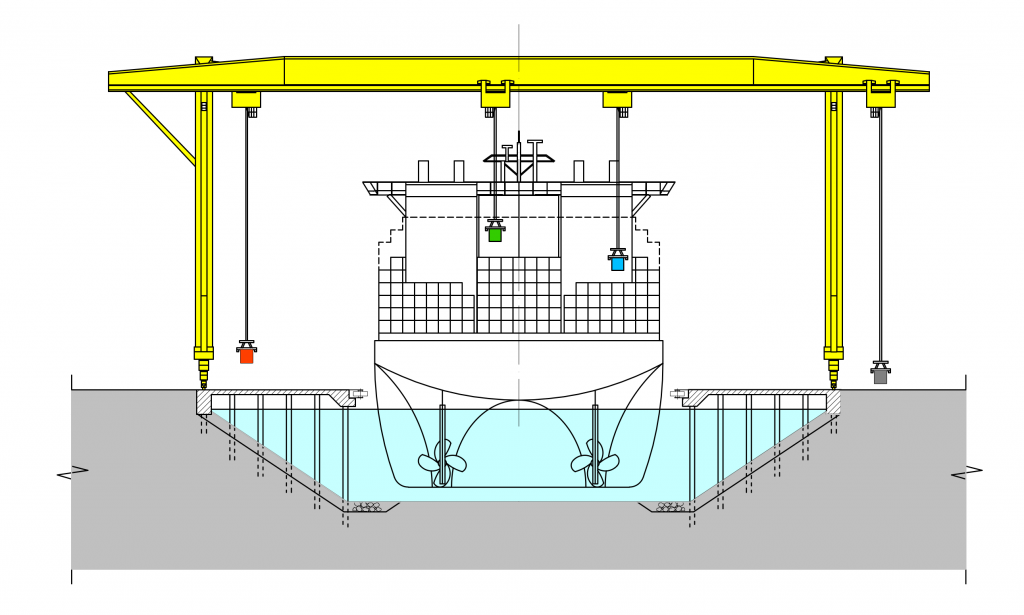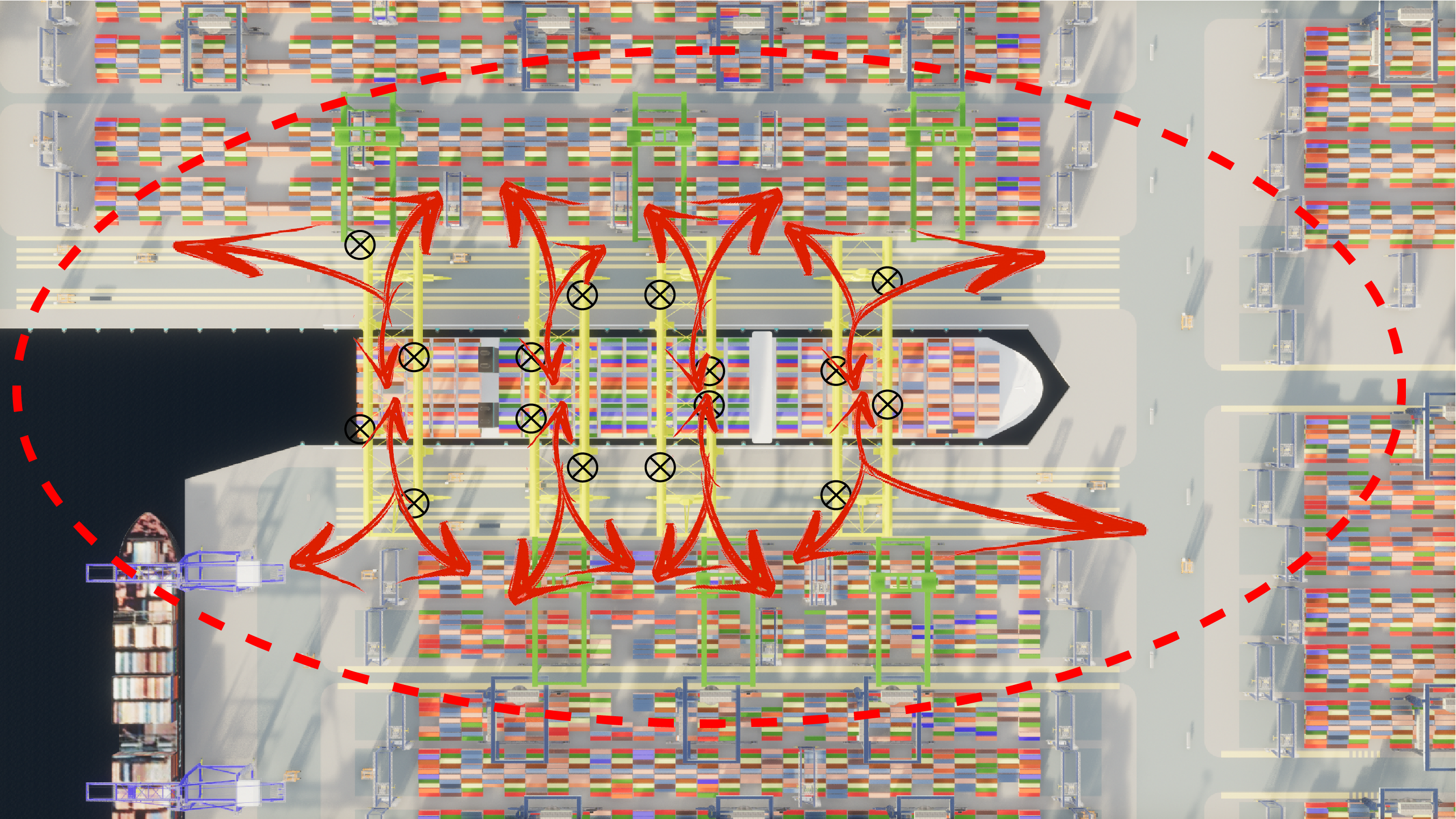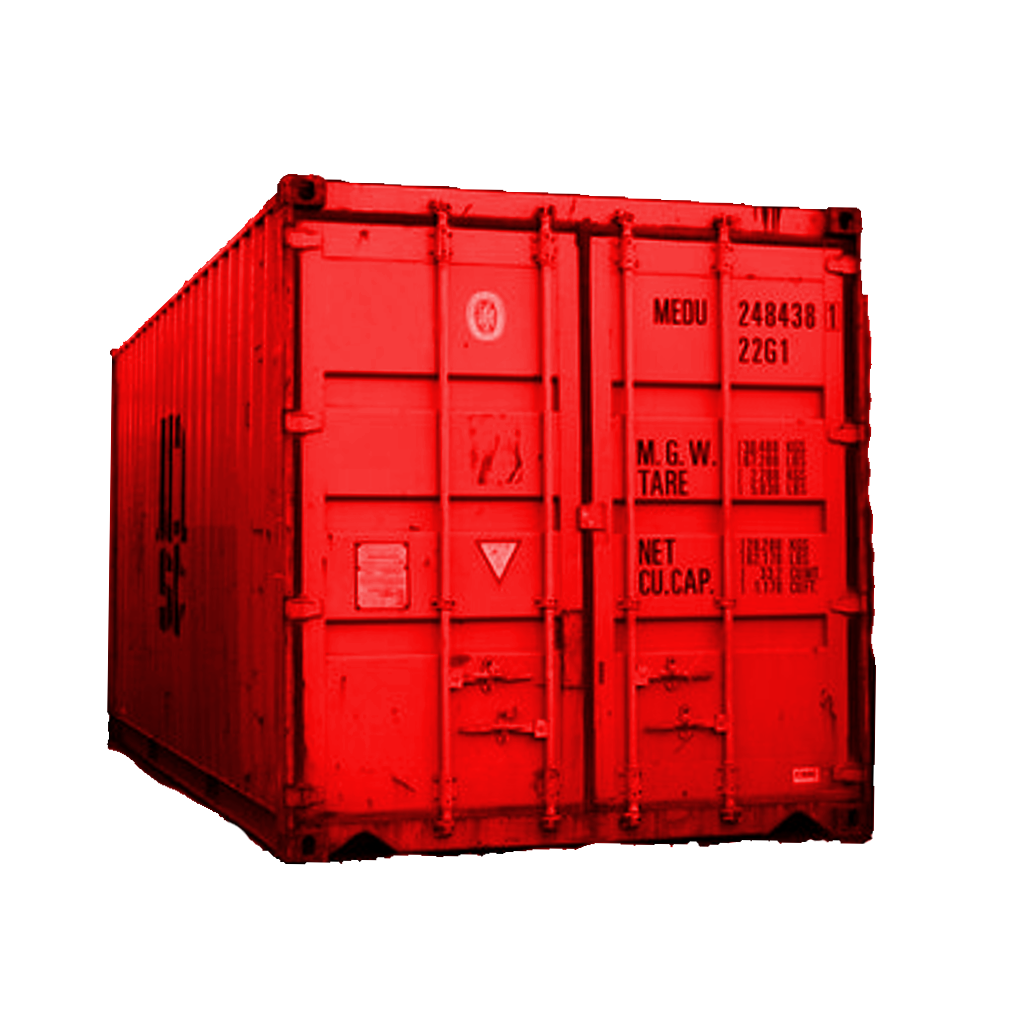The challenge laid down in 2015 by Maersk Line’s CEO Soren Skou on their unexpected introduction of the much larger vessels called for a “step-change” increase to 250 container moves per hour at each berth (up from about 167 at present). While various ideas have been proposed, none have been close to achieving this aspiration.
However, COFASTRANS can exceed this, achieving 325 moves per hour if four cranes are deployed (based on the JOC2016 ULCV average of just 2,430 port moves). By using a more efficient layout, it can occupy a smaller amount of precious coastal strip land.
Bespoke design for unique ports
With container ports across the world having very different natural layouts, constraints and requirements, there are several ways in which COFASTRANS can be implemented.
It is an interconnected system that complements and upgrades conventional terminal design. As a result, COFASTRANS can be flexibly designed to provide the optimum benefit for any individual terminal, accounting for the terminal cargo profile, storage and traffic constraints, as well as the navigational and berthing requirements for vessels.
COFASTRANS can comprise a single-indented berth to enhance an existing, heavily invested terminal, or a multi-indented berth transhipment hub.

Future-ready terminals
Port designs should go hand-in-hand with vessel design. Mega container vessels are coming into operation, shippers are considering placing more orders and port operators are looking to gain an advantage over competitors. As a result, an in-depth discussion on the fundamentals of port layouts for these vessels is urgently needed.
Any logistical, mechanical or technological developments that can be applied to a conventional terminal can also be applied to COFASTRANS, with the new layout making it twice as effective.
The outcome is a transformational system that is

| ← The Problem | References → |

